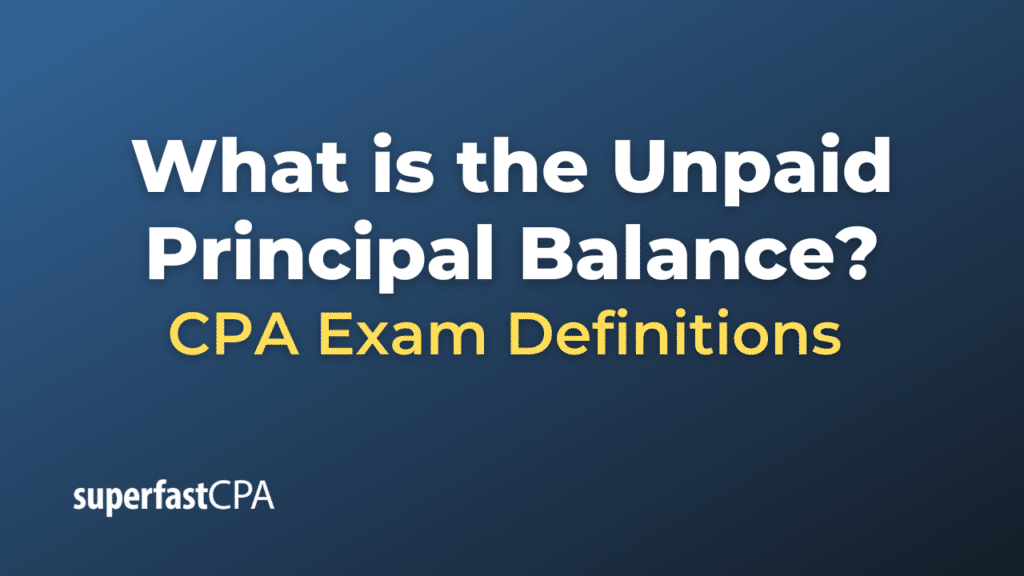Unpaid Principal Balance
The Unpaid Principal Balance (UPB) refers to the amount of principal on a loan that has yet to be paid off. It does not include interest or any other fees that may be associated with the loan; it only reflects the remaining balance of the amount originally borrowed. UPB is a crucial metric for understanding the current standing of a loan and is often used in calculations for loan amortization, refinancing, and determining monthly payments.
As you make payments on a loan, part of each payment typically goes toward paying off the interest accrued, and part goes toward reducing the principal balance. The UPB decreases over time as you continue to make payments that contribute to lowering the principal amount.
Knowing the UPB is important for various reasons:
- Refinancing: If you’re considering refinancing, lenders will want to know the UPB to assess the new loan terms.
- Selling a Property: If you’re selling a home before paying off the mortgage, you’ll need to know the UPB to determine how much money you’ll have after paying off the existing mortgage.
- Financial Planning: Understanding your UPB helps you make informed decisions about extra principal payments, payoff timelines, or potential loan modifications.
- Loan Statements: Your loan statement will usually show the UPB, often along with other important loan metrics like interest paid to date, next payment due, etc.
By keeping track of the UPB, borrowers can better manage their debt and make more informed financial decisions.
Example of the Unpaid Principal Balance
Here’s a simplified example to illustrate the concept of Unpaid Principal Balance (UPB).
Example: Car Loan
Let’s say you have taken out a car loan for $20,000 at an annual interest rate of 6%. The loan term is 60 months (5 years), and your monthly payment comes out to be approximately $386.66 using a standard loan amortization calculator.
Initial Situation
- Original Loan Amount: $20,000
- Annual Interest Rate: 6%
- Loan Term: 60 months
- Monthly Payment: $386.66
Now, let’s look at how the UPB changes over time.
Month 1
- Interest for Month 1: $20,000 x (6% / 12) = $100
- Principal Paid in Month 1: $386.66 (monthly payment) – $100 (interest) = $286.66
- UPB after Month 1: $20,000 (original loan amount) – $286.66 = $19,713.34
Month 2
- Interest for Month 2: $19,713.34 x (6% / 12) = $98.57
- Principal Paid in Month 2: $386.66 (monthly payment) – $98.57 (interest) = $288.09
- UPB after Month 2: $19,713.34 – $288.09 = $19,425.25
As you can see, the UPB reduces over time as you continue to make payments, and the portion of the payment that goes toward the principal increases slightly while the interest portion decreases. This trend continues over the life of the loan, as dictated by the loan’s amortization schedule.
Importance of UPB
Knowing your UPB is critical for several reasons:
- Refinancing: If you wish to refinance the car loan, the lender will consider the UPB to determine new loan terms.
- Selling the Car: If you decide to sell the car before the loan term is up, you’ll need to know the UPB to figure out whether the sale price will cover the remaining loan balance.
- Financial Planning: You might decide to make additional principal payments to reduce the UPB faster and save on interest over the life of the loan.
By keeping an eye on the UPB, you’ll have a clearer understanding of your financial obligations and can make more informed decisions.













